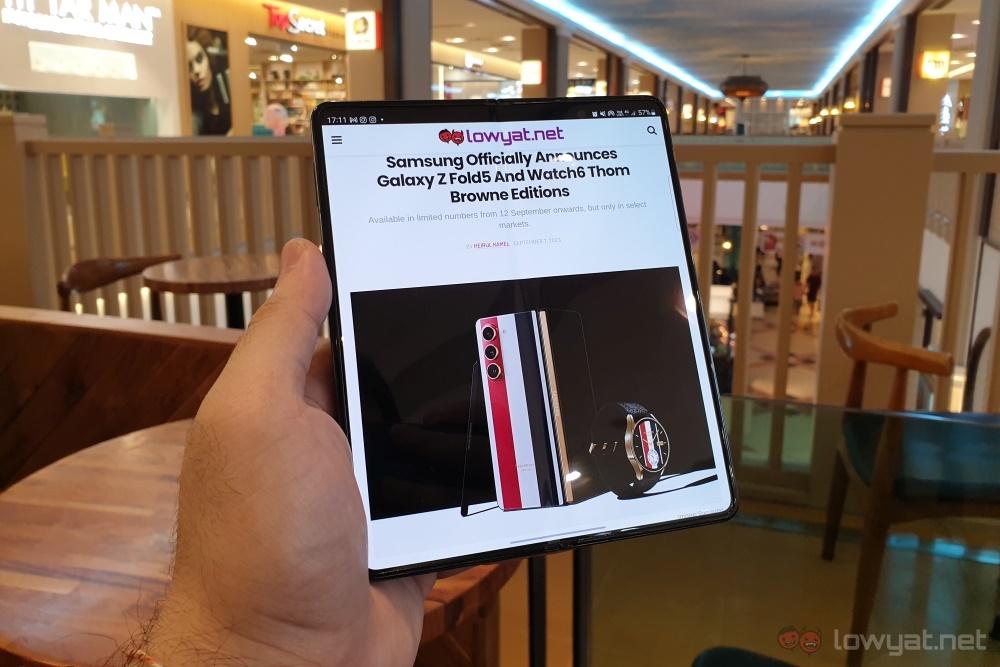The Samsung Galaxy Z Fold5 was made for a specific kind of smartphone user. While I’m not sure what exactly that kind of person is, I say with more confidence that I am not that person. But even as someone who prefers smaller phones, the fifth generation horizontally folding device by the South Korean tech giant still offers something to love, which I admit is still surprising until now, slightly over a month of using the device.
Specifications
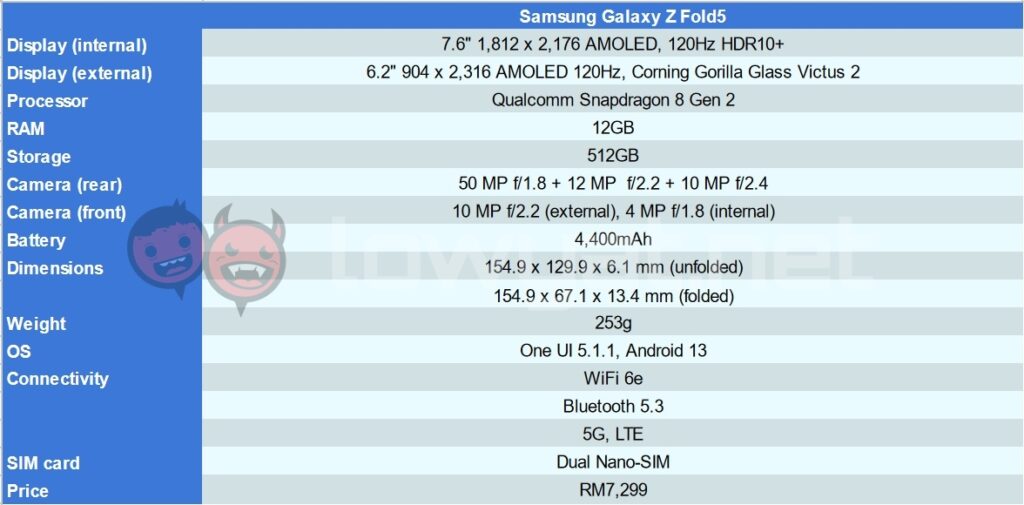
Being the priciest phone currently in its catalogue, it’s no surprise that the Samsung Galaxy Z Fold5 comes with top-of-the-line components. The brains of the device is the Qualcomm Snapdragon 8 Gen 2, with 12GB of RAM. While there are three different storage size options, our review unit came with 512GB. Powering the device is a 4,400mAh battery, which charges at a pretty modest rate of 25W.
Being a foldable device, we’re naturally looking at two screens to work with. The larger one is a 7.6-inch 1,812 x 2,176 AMOLED screen with a 120Hz refresh rate, and support for HDR10+. On the outside, there’s the 6.2-inch 904 x 2,316 AMOLED screen with its 23.1:9 ratio, as well as a layer of Corning Gorilla Glass Victus 2 on top.
Looks & Functionality
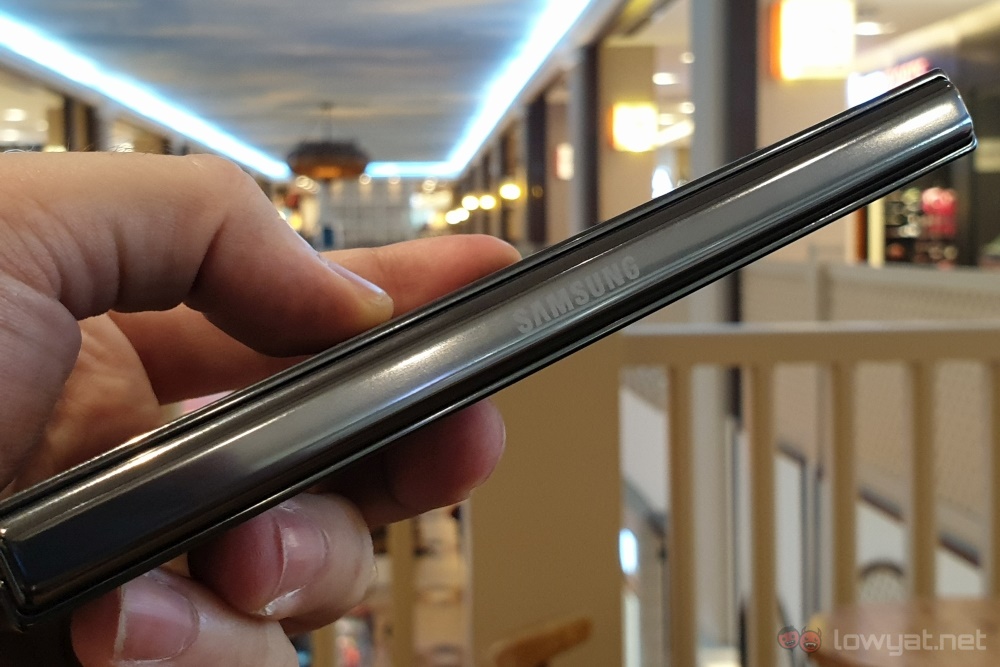
One of the most important improvements of the Samsung Galaxy Z Fold5 over its predecessors is the folding hinge. It now folds flatter, and at a glance you may even be under the impression that the two halves of the phone can now be parallel to each other. This makes it a lot more comfortable to hold in hand, and is now only slightly thicker when folded compared to the average phone that doesn’t fold. This is me nitpicking but if you take a very close look, you may notice that the side with the folding hinge is still ever so slightly thicker than the other, though this won’t be noticeable during regular use.
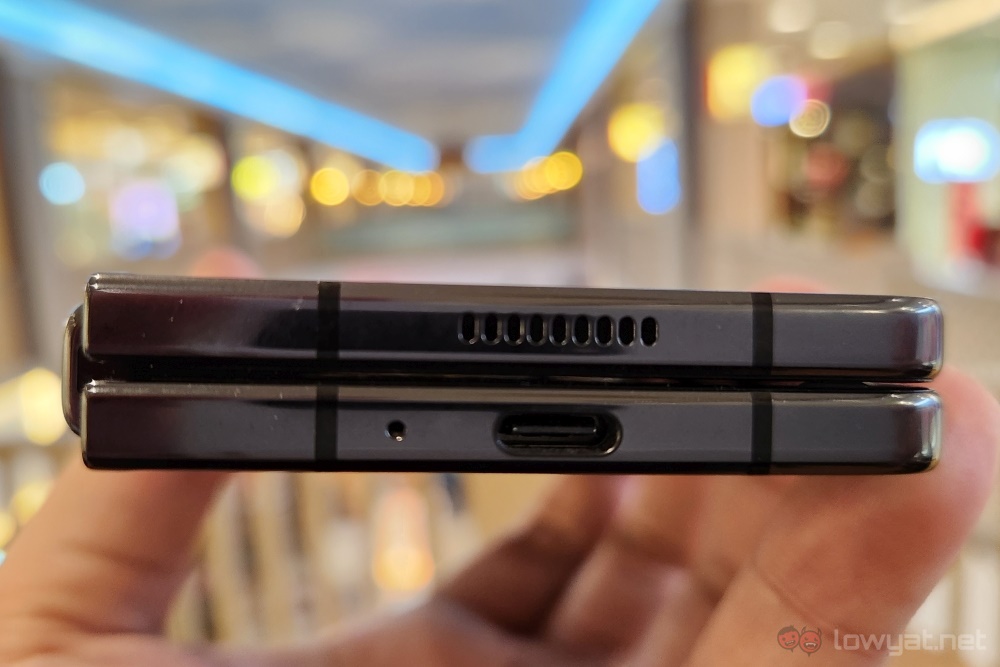
The entire package also comes an IPX8 rating, which means that it would be relatively safe from water damage. Not new by any means when it comes to this line of phones, but noteworthy nevertheless. Unfortunately, the X means that it’s not rated for dust resistance, leaving it still an issue for a device that can have a lot of gaps considering the folding mechanism.
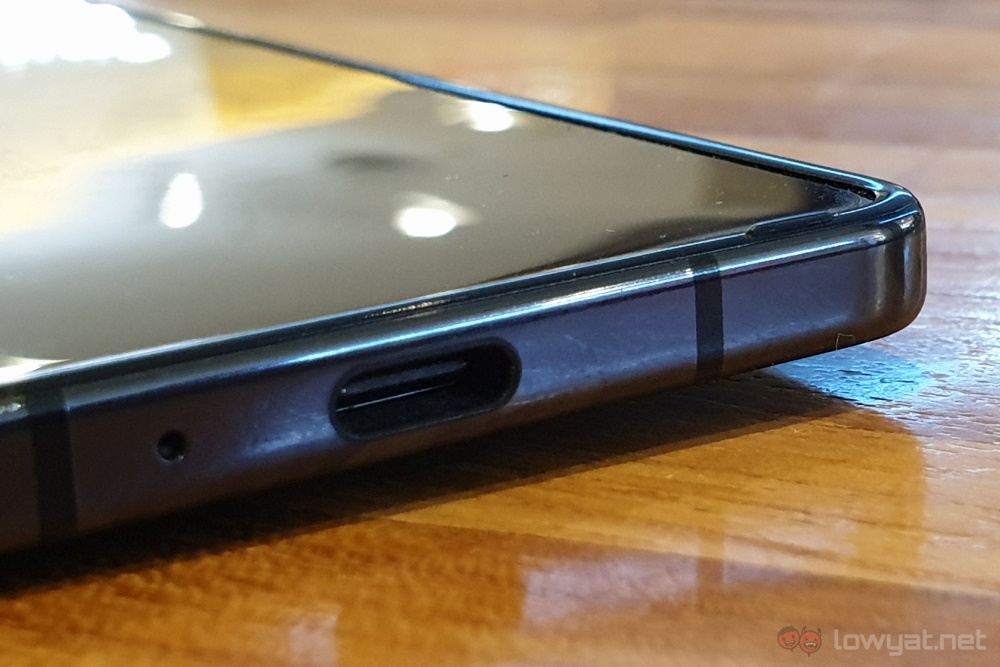
This leads to my next point about the Samsung Galaxy Z Fold5, especially as someone who doesn’t use it unfolded very often – the device collects dust within its gapquite easily. If, like me, you can go for over a week without ever unfolding the device, you’ll be surprised to find when you do that your screen is filled with dust. This necessitates unfolding it simply to wipe it down every once in a while, especially around the hinges where the dust tends to collect more.
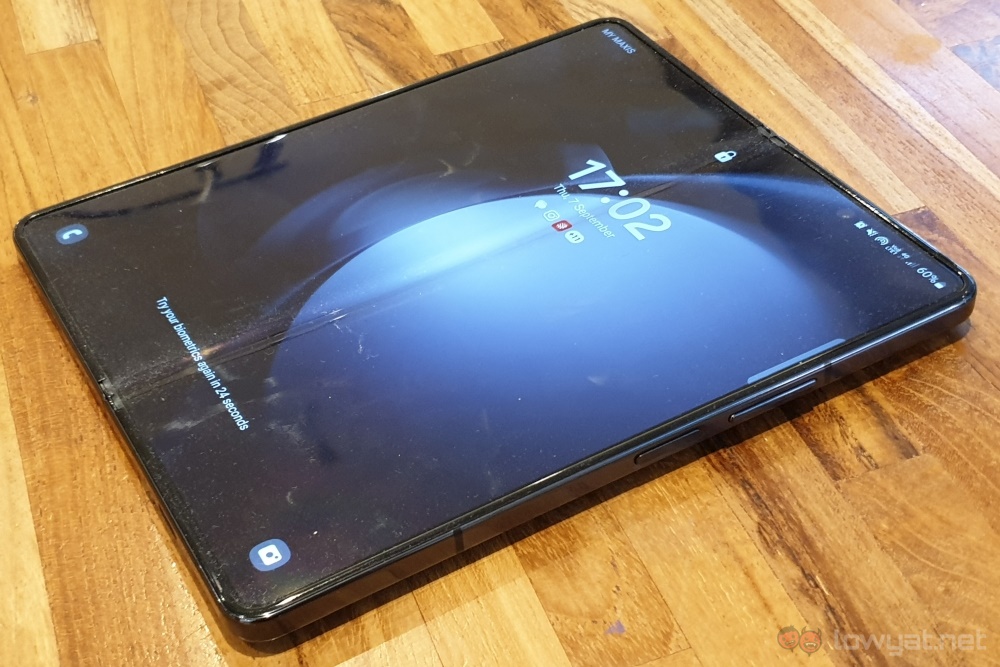
On that note, being a folding phone, there’s no getting around the crease in the middle of the inner screen when you use the Samsung Galaxy Z Fold5 when you spread it out. It can be distracting, especially when viewing darker content. But on the flip side, you’ll probably notice the crease less when multitasking, and having two windows open side by side. In our line of work, this happens often enough, having to type out a document while having another sitting on the side for reference, and doing so while on the move. But beyond that, and maybe occasionally keying in an SMS OTP, there are probably not many other use cases for the larger screen beyond viewing content.
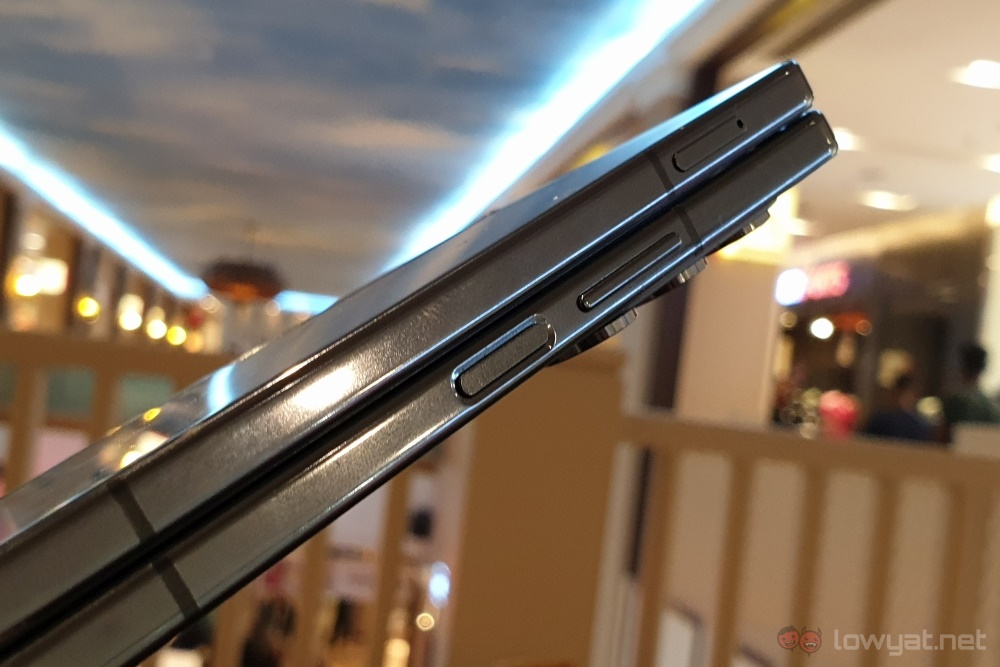
Granted, the smaller screen, especially given its aspect ratio, is not for everyone. But with the fingerprint sensor power button combo being mounted on the side, using it this way feels about as natural as any other smartphone with that design genius. And since I’m not looking at spreadsheets very frequently, and the external AMOLED display is as impressive as the one inside beyond size comparisons, it works well enough for video playback.
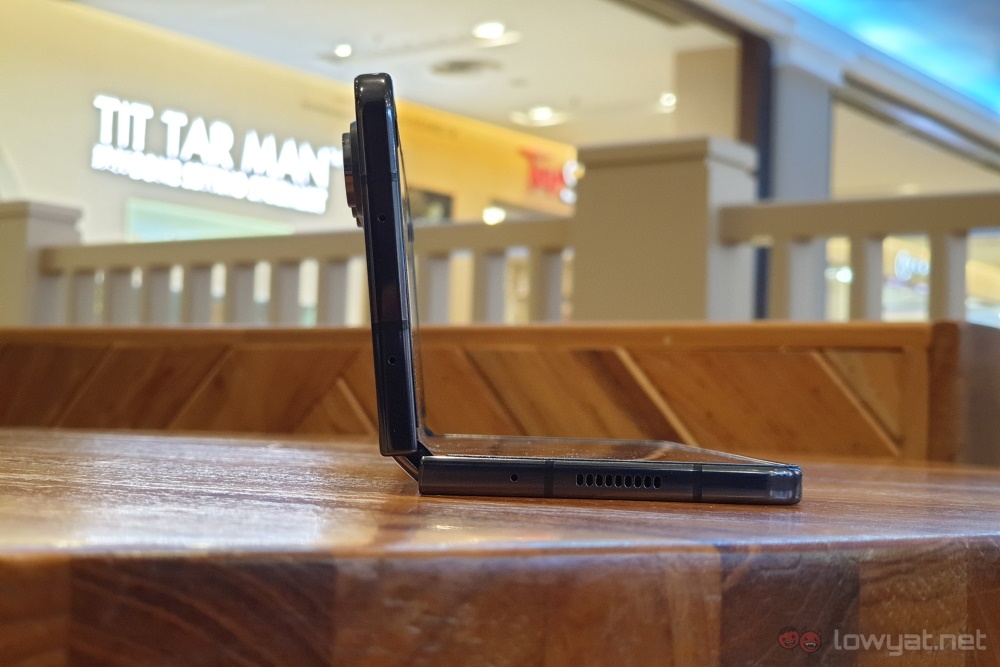
Finally, there’s Flex Mode, the least used mode throughout my time with the Samsung Galaxy Z Fold5. It undoubtedly has its uses, and specifically of the video conferencing kind, but beyond that, it’s difficult to imagine going out of your way to find a use for this mode. There’s the argument to be made for the YouTube app specifically, letting you have one half playing a video while the other half lets you scroll through its comments, but why divide your attention and ruin the experience of both like that?
Performance & Battery
As mentioned earlier, the AMOLED displays on the Samsung Galaxy Z Fold5 are great, producing sharp images and vivid colours. So you’re really only choosing between dealing with either a crease or a smaller display screen real estate, depending on what you’re using it for.
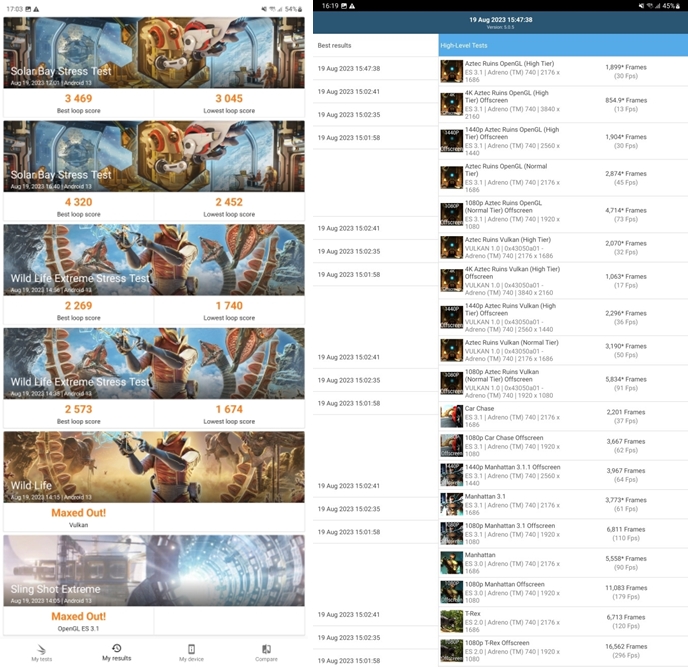
On the number-crunching front, the Qualcomm Snapdragon 8 Gen 2 does its usual magic. This is reflected in both synthetic benchmarks as well as in real-world gaming use. Granted, games are more polished these days, but my experience with Final Fantasy Brave Exvius, effectively the only mobile game I play, as well as Monster Hunter Now for the sake of confirming a few details for this opinion piece, were buttery smooth with no hiccups.
Battery life for the foldable though, is pretty average. On days where usage is conservative, it’s easy to end the day with about half the tank still available. But when work calls for a lot of navigation and camera use, as well as video playback and mobile gaming to blow off steam, you can easily end the day with under 10% of juice left. So while there’s enough to last a day, you’ll be stretching yourself very thin if you want to make it last more than that.
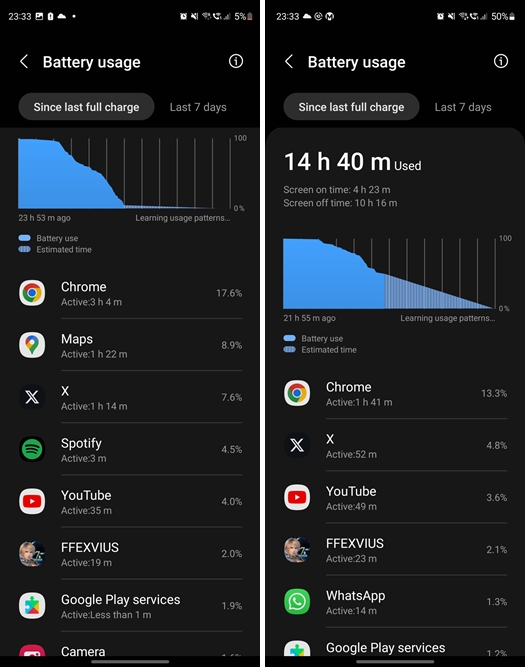
Oddly enough, it also doesn’t look like either screen would take up more battery than the other. Having run our video looping test twice – one with the external screen and another with the main display – run times are very comparable. Specifically, the first test yielded 16 hours and 27 minutes of run time, while the latter test lasting 16 hours and 29 minutes. The difference can really be chalked up to variance. And since charging is limited to 25W, even when plugging in a 120W charger we had lying around, it took an hour and 23 minutes for the 4,400mAh battery to go from empty to full.
Camera
The camera setup for the Samsung Galaxy Z Fold5 consists of a 50MP main + a 10MP telephoto + a 12MP wide-angle camera. Which is pretty identical to what the Galaxy S23 has, itself the result of tweaking the lineup from the previous generation phone. Not exactly the same setup, mind you, but in terms of results you can expect images of similar quality in general.
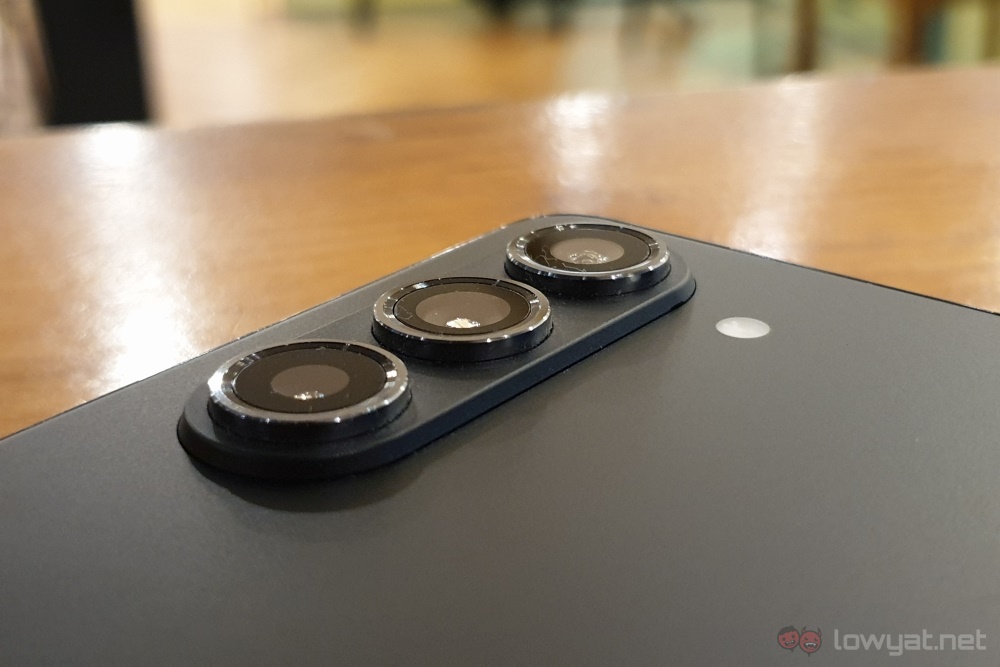
In other words, it has just about the same strengths and weaknesses of said phones when it comes to the imaging department. Detail retention remains great, while colours tilt towards the vivid side of the scale on occasion. Unfortunately, there’s still a very noticeable colour inconsistency when the phone switches between the three cameras, though this is a common occurrence in today’s age of multi-camera phones.
Sample Images
Competition
HONOR Magic Vs
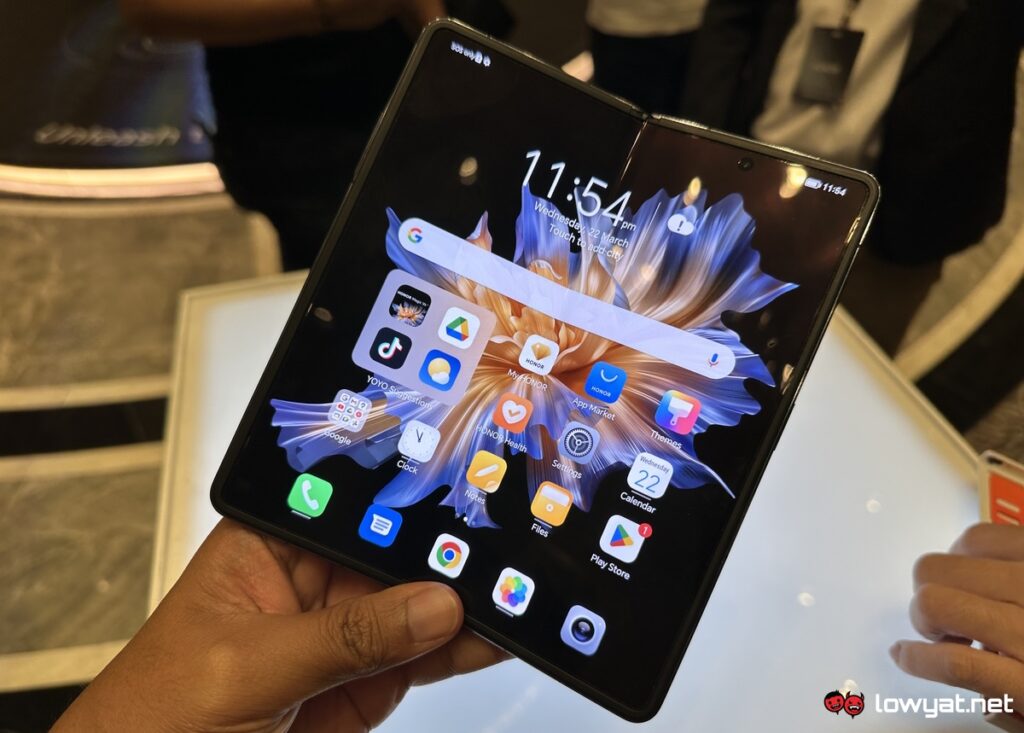
One book-style foldable alternative that is available in Malaysia is the HONOR Magic Vs. It is slightly more affordable than the Samsung Galaxy Z Fold5, being priced at RM5,999 and shares many items on its spec sheet with the model by the South Korean tech giant. Though one key difference between the two is that the HONOR foldable comes with a Qualcomm Snapdragon 8 Plus Gen 1 chipset instead.
Other differences are in its cameras, as it has instead a 54MP main + 50MP wide-angle and macro + 8MP telephoto lens. Battery is also slightly larger, being rated at 5,000mAh, but more noticeable is the charging rate, which goes up to 66W.
Huawei Mate X3
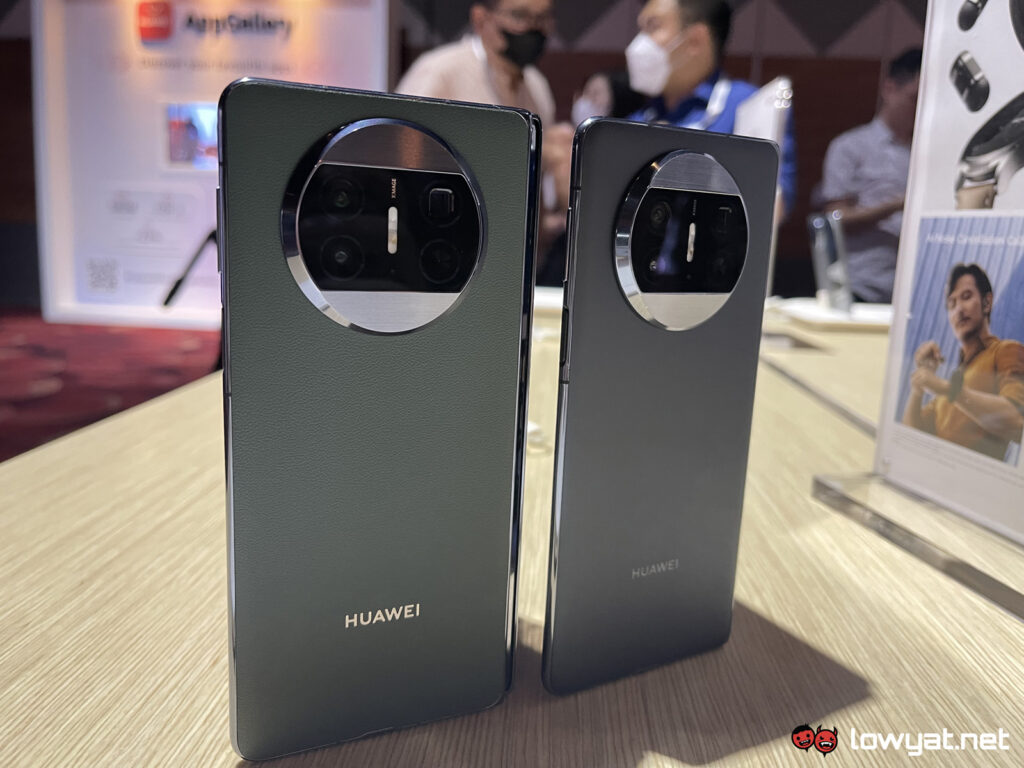
Another alternative comes from Huawei, in the form of the Mate X3, which comes with an RM8,888 price tag. This one also comes with a Snapdragon 8 Plus Gen 1, but one thing it has over the others is the ability to expand its storage space. Unfortunately, this is done via the proprietary NM cards.
The camera setup of the X3 is also more similar to the Samsung Galaxy Z Fold5, comprising of a 50MP main + 13MP wide-angle + 12MP periscope telephoto combo. Its battery is rated at 4,800mAh, but it sports the same 66W charging rate.
Conclusion
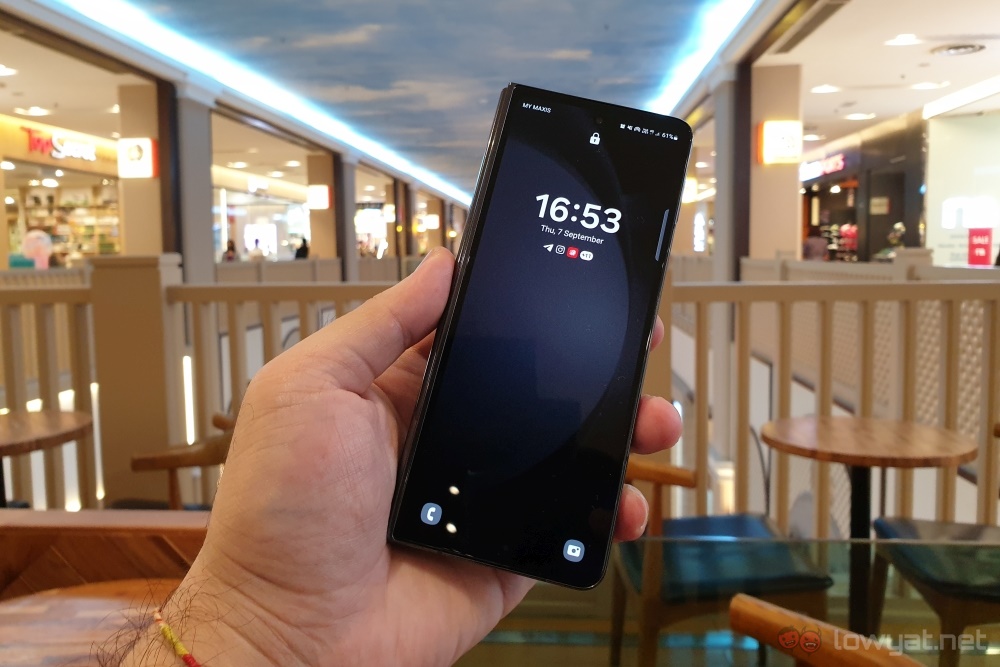
There is the argument to be made that foldable phones are no longer a niche product category, and that it will be just as mainstream as the established single slab design. While this may turn out to be true sometime down the line, book-style foldables like the Samsung Galaxy Z Fold5 will likely be beaten to the punch by clamshell types like the company’s own Galaxy Z Flip5.
That being said, the argument can be made for folks who want a single device to do the duties of both a phone and a tablet. And priced at between RM6,799 and RM8,299 depending on the amount of storage space, the Samsung Galaxy Z Fold5 can potentially be more affordable to get this than paying for two devices. And for power users, the larger screen can certainly come in useful.
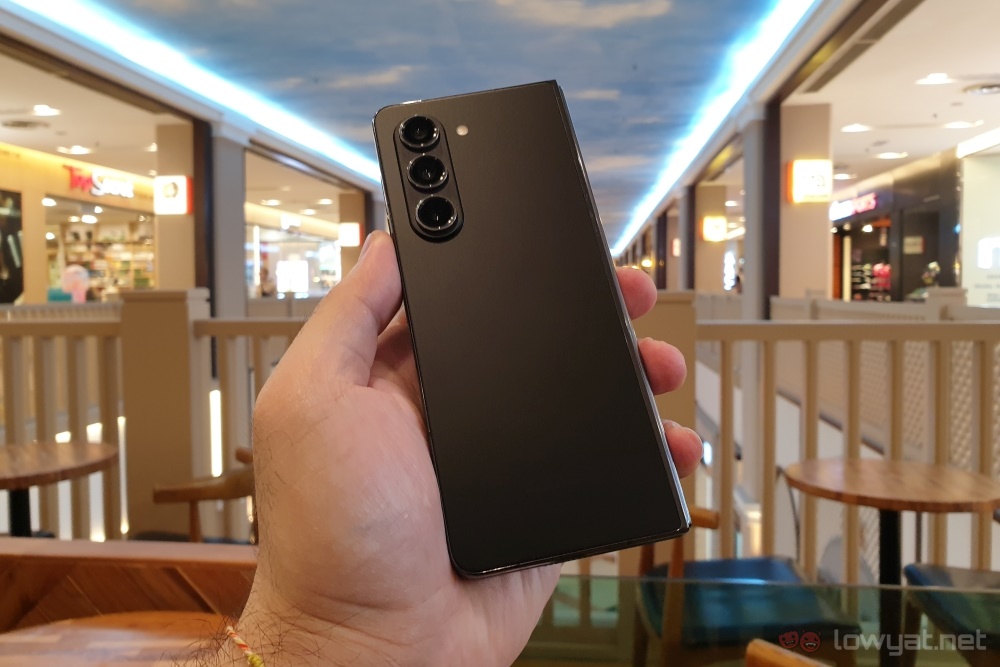
If you consider yourself among said power users, then the Samsung Galaxy Z Fold5 won’t disappoint. You pay a pretty hefty price for a device that can just about do it all, and while there may be areas where there’s room for improvement, you’ll likely not be left wanting with the overall package, especially now that the hinge is so much improved.
Follow us on Instagram, Facebook, Twitter or Telegram for more updates and breaking news.


